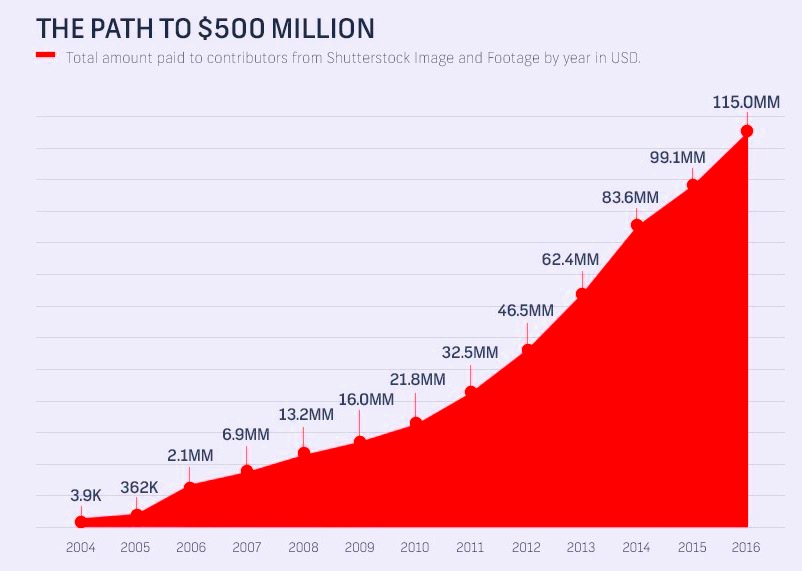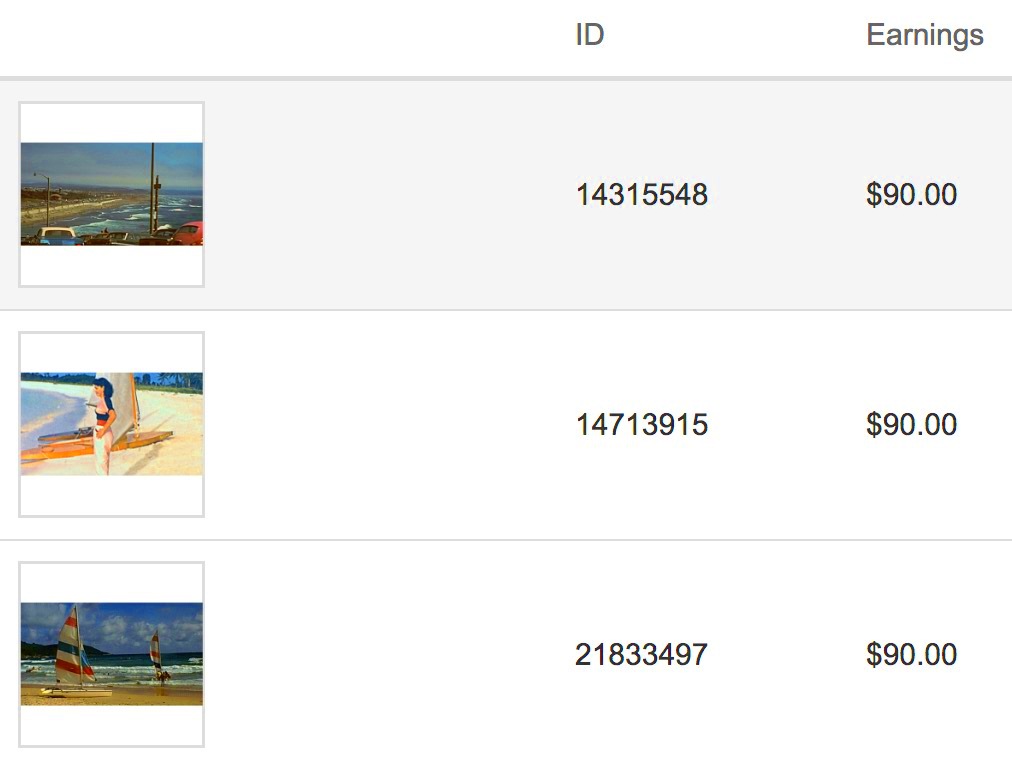Shutterstock is a popular platform that allows creators to sell their images, videos, and music. If you’re an artist or a photographer, contributing to Shutterstock can be a great way to earn passive income. You upload your content, and every time someone purchases it, you get paid. But how does it all work? Let’s break it down.
When you contribute to Shutterstock, you become part of a vast marketplace. Your work is exposed to millions of buyers, including businesses, marketers, and individuals looking for high-quality visual content. The more appealing and unique your contributions are, the better your chances of making sales.
It’s important to understand the submission guidelines and quality standards. Shutterstock reviews every submission to ensure it meets their criteria. Once approved, your content is available for customers to purchase. Each sale adds to your earnings, which can accumulate over time, especially if you keep adding new content.
Getting Started with Shutterstock

Starting your journey on Shutterstock is straightforward. Here’s how to get going:
- Create an Account: Sign up on the Shutterstock website. You’ll need to provide some basic information.
- Submit Your Content: Once your account is set up, you can start uploading your photos, videos, or music. Make sure your content follows the guidelines.
- Understand the Licensing: Shutterstock uses a royalty-free model, meaning customers can use your content without paying you again after purchase.
- Track Your Sales: After your content is live, monitor your sales through your account dashboard. This helps you understand what works and what doesn’t.
Remember, persistence is key. The more you contribute, the better your chances of success!
Also Read This: Can Alexa Stream YouTube Music? Your Complete Guide
Factors Influencing Your Earnings on Shutterstock

Your earnings on Shutterstock can vary widely based on several factors. Here are some of the most significant:
- Content Quality: High-quality images and videos tend to sell better. Make sure your work is well-composed and professionally edited.
- Market Demand: Some themes or topics are more popular than others. Research current trends to understand what buyers are looking for.
- Quantity of Submissions: More content means more opportunities to earn. Regularly upload new material to keep your portfolio fresh.
- SEO Practices: Use relevant keywords and descriptions when uploading your work. This helps potential buyers find your content more easily.
- Licensing Type: Understand the different types of licenses available. Some buyers may prefer extended licenses, which can earn you more money.
By focusing on these factors, you can increase your chances of making a good income from your Shutterstock contributions. The key is to stay engaged and continuously improve your work.
Also Read This: How to Block Fortiguard Downloader Web Filtering
Types of Content You Can Contribute
Shutterstock offers a wide range of content types for contributors. If you’re thinking about joining, it’s essential to know what kinds of material you can upload. Here’s a breakdown of the primary content categories you can contribute:
- Photography: High-quality images are the backbone of Shutterstock. Whether you specialize in landscapes, portraits, or product photography, there’s a market for your work.
- Illustrations: If you’re skilled in digital art, vector illustrations are always in demand. Create unique designs that can be used in various projects.
- Videos: Short clips, animations, and stock footage can attract buyers looking for dynamic content. Consider adding video to your portfolio.
- Music: Shutterstock also accepts audio tracks. If you’re a musician, think about creating background music that can be licensed for videos and other media.
- Editorial Content: Images that capture current events or cultural moments can be valuable. Editorial contributions can help highlight significant stories and trends.
Knowing the types of content you can create will help you focus your efforts. Keep in mind that variety can also benefit your portfolio. By offering different types of content, you can appeal to a broader audience and increase your chances of sales.
Also Read This: Ultimate Guide to Watching YouTube TV on Peloton for Fitness Enthusiasts
How to Optimize Your Contributions for Better Earnings
Once you’ve started contributing to Shutterstock, optimizing your content for better earnings is crucial. Here are some effective strategies to help you maximize your income:
- Use Keywords Wisely: When uploading content, choose relevant keywords that describe your work accurately. This helps improve visibility in search results.
- Create Compelling Titles and Descriptions: Write engaging titles and detailed descriptions. This gives potential buyers context and encourages them to choose your content.
- Maintain High Quality: Always prioritize quality over quantity. Ensure your images and videos are sharp, well-lit, and properly edited.
- Stay Current with Trends: Regularly research what types of content are trending. This helps you create relevant material that buyers are actively seeking.
- Update Your Portfolio: Remove older or less popular content to keep your portfolio fresh. Adding new work regularly can attract more buyers.
By implementing these optimization techniques, you can significantly increase your chances of earning more from your contributions. Remember, it’s all about presenting your work in the best possible light!
Also Read This: How to Remove Text from Shutterstock Images Professionally
Common Mistakes to Avoid as a Contributor
While contributing to Shutterstock can be rewarding, there are pitfalls to watch out for. Here are some common mistakes that can hinder your success:
- Ignoring Submission Guidelines: Each platform has its own rules. Make sure to read and follow Shutterstock’s guidelines to avoid having your content rejected.
- Submitting Low-Quality Content: Always prioritize quality. Submitting blurry or poorly composed images can hurt your reputation and earnings.
- Neglecting Metadata: Failing to add accurate keywords, titles, and descriptions can make it difficult for buyers to find your work. Take time to craft this information carefully.
- Not Keeping Up with Trends: The market can change quickly. Stay informed about what’s popular to ensure your contributions remain relevant.
- Overlooking Licensing Options: Understand the different licensing models Shutterstock offers. Choosing the right one can significantly impact your earnings.
Avoiding these common mistakes can help you have a smoother experience as a contributor. Keep learning and adapting, and you’ll likely see better results over time.
Also Read This: Start Earning Money from Your Dailymotion Channel
Real Experiences from Shutterstock Contributors
Hearing from actual Shutterstock contributors can give you valuable insights into what it's like to be part of this platform. Many contributors share their stories about successes, challenges, and the learning curves they've encountered along the way. Here’s what some contributors have to say:
- Success Stories: Many contributors report making a nice side income from their submissions. Some photographers mention how a single image they uploaded sold thousands of times, significantly boosting their earnings.
- Building a Portfolio: Contributors emphasize the importance of having a diverse portfolio. Many have found that the more they upload, the more their chances of making sales increase. Regularly adding new content keeps their portfolio fresh and appealing.
- Learning from Feedback: Contributors also note the value of receiving feedback from Shutterstock's review process. It helps them understand what works and what doesn’t, allowing them to improve their submissions over time.
- Challenges Faced: Some contributors mention the initial learning curve. It can take time to understand what type of content sells best and how to effectively optimize their submissions.
Overall, contributors express that persistence and adaptability are key. Those who consistently create and upload new content while learning from their experiences often find success on the platform.
Also Read This: How to Hide Your Price List in ShootProof
FAQ about Shutterstock Contributions
As with any platform, contributors often have questions about how things work on Shutterstock. Here are some frequently asked questions and their answers:
| Question | Answer |
|---|---|
| How much can I earn from Shutterstock? | Earnings can vary widely. It depends on the quality of your content, the number of downloads, and the licensing type. Some contributors earn a few dollars a month, while others make hundreds. |
| Do I need a special camera to contribute? | No, you don’t need a professional camera. However, high-quality images will generally sell better, so using a decent camera is advisable. |
| Can I contribute videos and music too? | Yes! Shutterstock accepts various content types, including videos and music, allowing for more opportunities to earn. |
| What happens if my content is rejected? | If your content is rejected, Shutterstock usually provides feedback. You can learn from it and make improvements for future submissions. |
These FAQs provide a helpful starting point for anyone considering contributing to Shutterstock. The more informed you are, the better prepared you’ll be to succeed!
Conclusion on Shutterstock Earnings Potential
In conclusion, Shutterstock offers a promising platform for creators to monetize their skills and content. With various types of contributions, from photography to music, there are numerous opportunities to earn income. However, success doesn’t come overnight. It requires dedication, quality work, and a willingness to adapt to market trends.
By understanding the types of content that sell, optimizing your contributions, and learning from the experiences of others, you can enhance your chances of making a decent income. Remember, building a portfolio and staying engaged with the community can pay off in the long run. As you continue to contribute and refine your approach, you may find that the earnings potential on Shutterstock can be quite rewarding!
